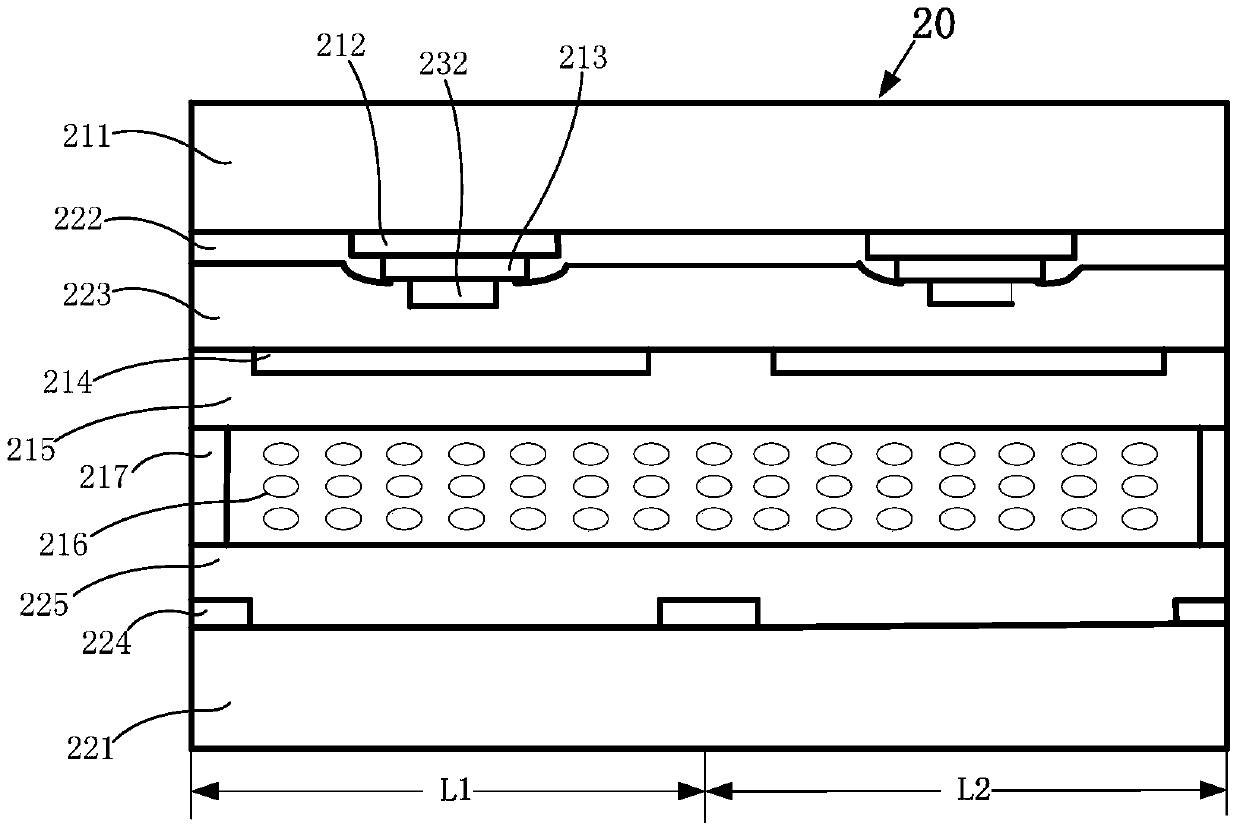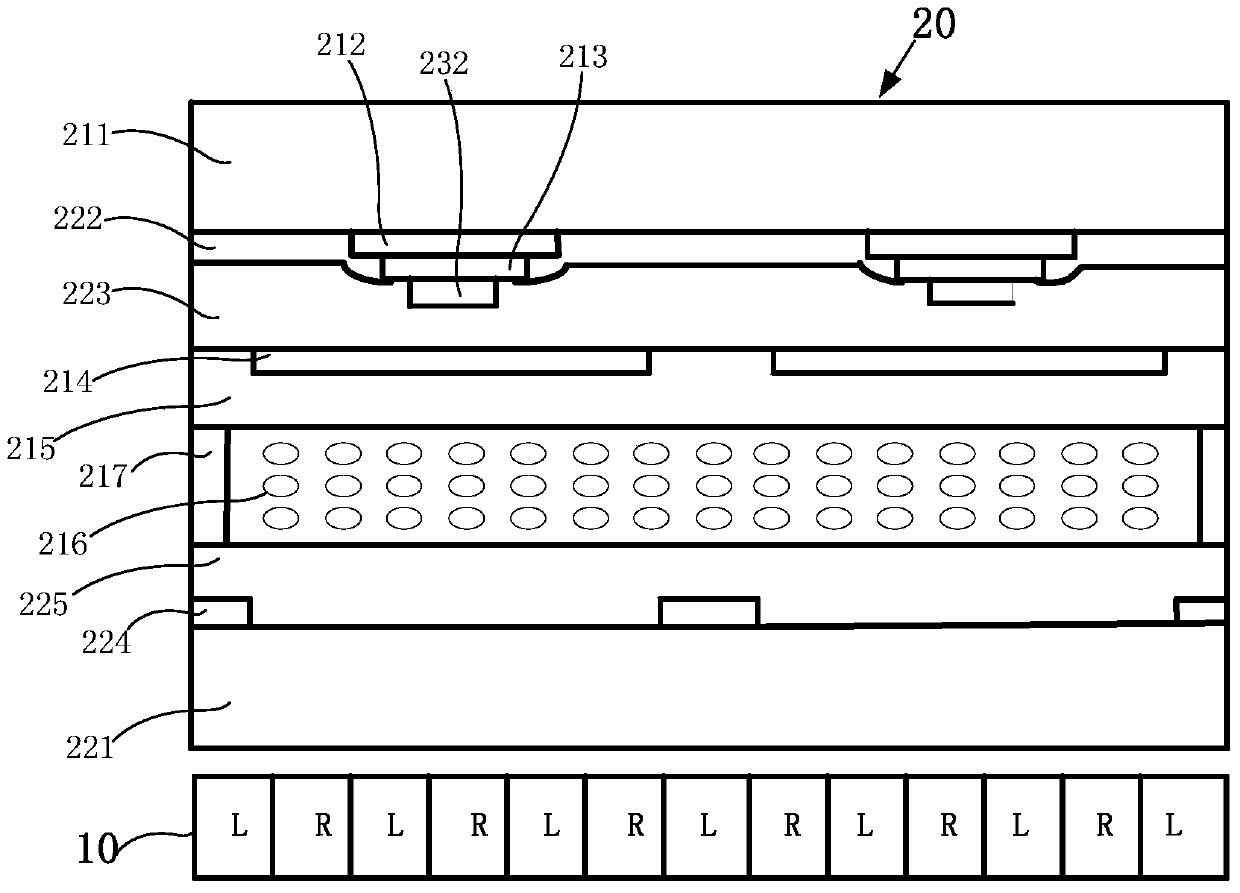Touch liquid crystal lens and its working method, stereoscopic display device
A liquid crystal lens and touch technology, applied in stereoscopic systems, instruments, computing, etc., can solve the problems of increasing the complexity of display devices, inconvenient portability, and reducing user experience, so as to achieve good naked-eye 3D display effects and avoid interference or shielding effect, mitigation or shielding effect
- Summary
- Abstract
- Description
- Claims
- Application Information
AI Technical Summary
Problems solved by technology
Method used
Image
Examples
Embodiment 1
[0053] figure 1 In the shown structure, a mutual capacitance is formed between the first electrode layer 214 and the touch electrodes (the touch electrodes include the touch sensing electrodes 222 , the touch driving electrodes 232 and the bridge electrodes 212 ). The inventors of the present application found by analyzing the principle of mutual capacitance and through specific experimental tests, figure 1 In the shown structure, the distance between the first electrode layer 214 and the touch electrodes is usually set at about 2-3 μm, and the distance is usually set too small, which will cause interference to the touch signal, cause a shielding effect, and result in a touch effect. poor.
[0054] For example, for a touch liquid crystal lens in the above distance range, a result of the data test related to the touch function is shown in Table 1 and Table 2 below, where Table 1 represents each touch detection point corresponding to the row and column The original value of th...
Embodiment 2
[0076] In this embodiment, in order to avoid the interference of the entire surface of indium tin oxide (ITO) on the touch circuit, the figure 1 The first electrode (that is, the common electrode of the liquid crystal lens) is canceled, and the touch circuit is periodically time-division multiplexed, so that the touch circuit can not only play the role of touch detection, but also play the role of the first electrode role. Thus, the interference of the first electrode (lens common electrode) on the touch circuit can be completely avoided, and the touch function can be improved.
[0077]Specifically, in this embodiment, a certain period of time in a cycle of the touch circuit is set as the touch time, and other periods are set as the liquid crystal driving time. For example, if the frequency of the touch liquid crystal lens is 60 Hz, about 4.2 ms can be used for touch scanning, and the remaining about 12.47 ms can not be scanned, which is only used for liquid crystal driving o...
PUM
| Property | Measurement | Unit |
|---|---|---|
| thickness | aaaaa | aaaaa |
Abstract
Description
Claims
Application Information
 Login to View More
Login to View More - R&D
- Intellectual Property
- Life Sciences
- Materials
- Tech Scout
- Unparalleled Data Quality
- Higher Quality Content
- 60% Fewer Hallucinations
Browse by: Latest US Patents, China's latest patents, Technical Efficacy Thesaurus, Application Domain, Technology Topic, Popular Technical Reports.
© 2025 PatSnap. All rights reserved.Legal|Privacy policy|Modern Slavery Act Transparency Statement|Sitemap|About US| Contact US: help@patsnap.com



